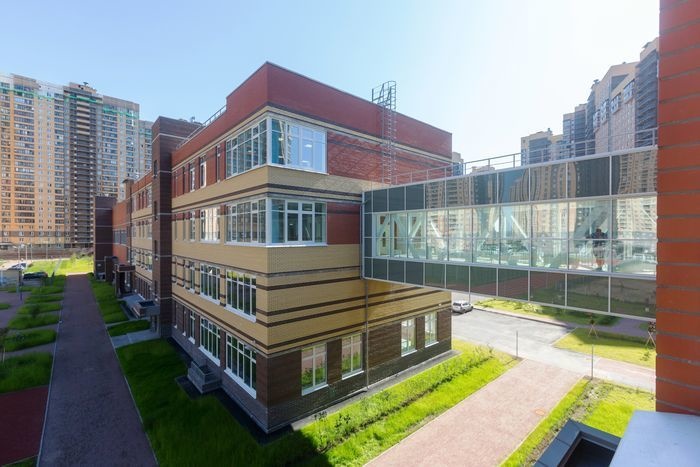

The top of the building was adorned with an electrically illuminated sign reading "God is love" and the electrically illuminated sign of this distinctive Protestant community-a Christogram in the shape of a heart placed in an equilateral heptagon. The three-story building had simple lines accented by an asymmetric facade and a small attic. House of the Gospel was designed in Art Nouveau style, but without the decor characteristic of most buildings of this architecture. The architect and construction manager was Ivan Kaliberda who mainly built apartment buildings on Vasilyevsky Island and the Petrogradskaya district: for example, the Schwartz house on the corner of the 2nd line and Bolshoy Prospekt, the Breche house on 10th Lane, the Puni house, etc. By the end of 1911 the building held its first worship service and in the middle of 1912 the building received its occupational permit and was insured. (That was only one single case of "loan" for the construction.) Petersburg Baptist Society Wilhelm Andreevich Fetler, who has donated all his own savings and borrowed some extra money. Big work in motivating the believers and collecting the funds for the project was done by the head leader of St. The land and construction costs were paid off by collective donations from many Baptist's communities of Russia. Today's numbers would be around 43 – 65 million Russian Rubles. This parcel of the land, despite its location, was an expensive purchase. House of the Gospel would elevate the status of Baptists in the nations capital and serve as the main hub and representation for Baptists. However, the chairman of the Union of Russia Baptists, Dey Ivanovich Mazaev, was able to convince those who were in disagreement that it was necessary not only to attract new people to the Gospel, but also There were opinions that for such money, more than 200,000 Russian Rubles, it was better to build several church buildings in different cities. However, after the land was already purchased, a hot debate broke out about the feasibility of construction. He also personally borrowed a significant amount of money (it was the only case of a loan taken for the church construction). Petersburg community, pastor Wilhelm Andreevich Fetler, who himself donated all his personal savings. Great assistance in fundraising was provided by the sermons of the head of the St. All the funds were provided from donations of fellow believers across Russia. The purchase of the property and the construction of the building were paid for without bank loans. This piece of land, despite its location, was very expensive: Today the cost would be around 43 to 63 million Rubles.


 0 kommentar(er)
0 kommentar(er)
